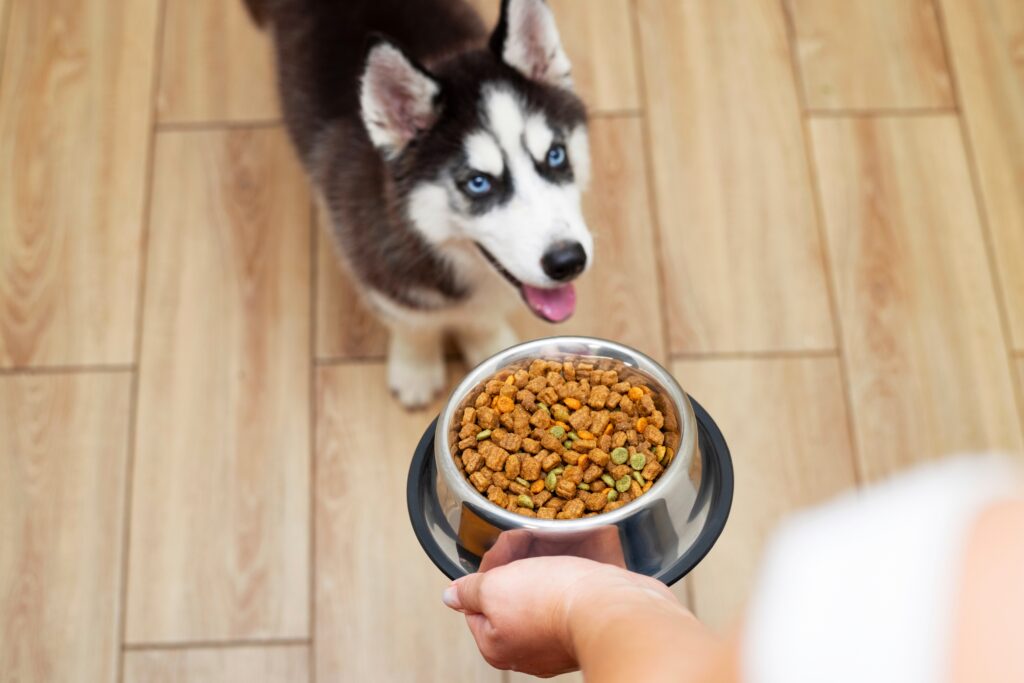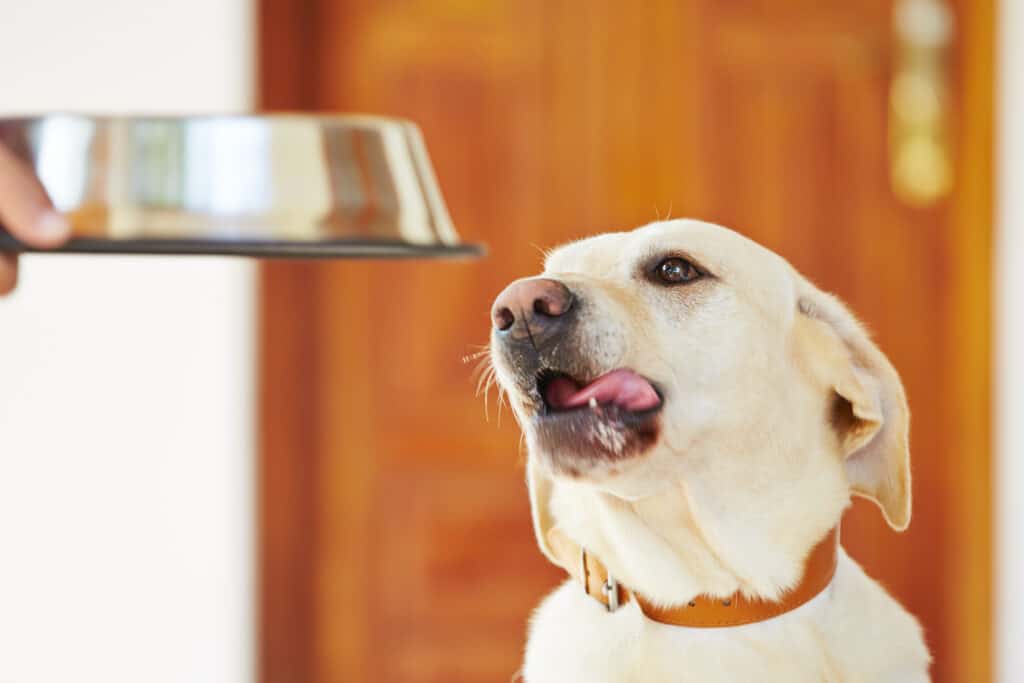There are many reasons why you may want to switch your dog’s food, from food recalls to changes in dietary needs. Your dog may have developed health issues that require a change in diet or may be in a different life stage that necessitates a new food.
Changing your dog’s food every two to four months is a good idea to avoid nutrient deficiencies. Each food brand has different nutrient levels, so feeding a variety of high-quality foods will prevent nutrient toxicity, deficiency, and imbalance. You can also prevent food allergies or intolerances by switching protein sources occasionally.
The Importance of a Smooth Food Transition for Your Dog
If you switch foods abruptly, your dog may experience digestive issues such as vomiting, diarrhea, or a decreased appetite. Or your dog may not want to eat the new food because it’s unfamiliar.
To avoid these problems, you must know how to transition smoothly from one food to another. A gradual transition will give your dog’s system time to adjust to the new food without causing any unnecessary discomfort.

Huskies are intelligent, active dogs that can eat various foods.
©Andrii Spy_k/Shutterstock.com
Planning the Switch: Step-by-Step Guide to Transitioning Your Dog’s Food

Dogs should transition to a new food slowly.
©Prostock-studio/Shutterstock.com
If you plan to change your dog’s diet, consult your veterinarian first. Your veterinarian can advise you on which food is best for your dog. Take at least a week to switch your dog to a new food whenever possible.
Follow these ratios when mixing the old and new foods:
| Day | Food Ratio |
|---|---|
| Day 1 | 25% new food and 75% old food |
| Day 3 | 50% new food and 50% old food |
| Day 5 | 75% new food and 25% old food |
| Day 7 | 100% new food |
Switch back to the old food if your dog stops eating or has vomiting or diarrhea during this process. If your dog’s symptoms persist after switching to their old food, contact your veterinarian.
You can take it even slower if your dog has a sensitive stomach or if the new food differs significantly from the old, for instance, a different protein source or a change from dry to wet food.
| Days | Food Ratio |
|---|---|
| Day 1-2 | 10% new food and 90% old food |
| Day 3-4 | 20% new food and 80% old food |
| Day 5-6 | 30% new food and 70% old food |
| Day 7-8 | 40% new food and 60% old food |
| Day 9-10 | 60% new food and 40% old food |
| Day 11-12 | 80% new food and 20% old food |
| Day 13 | 100% new food |
Troubleshooting Tips: Addressing Common Challenges and Ensuring a Successful Food Switch

Dog food is food specifically formulated to meet a dog’s nutritional needs, but formulations vary by manufacturer.
©Jaromir Chalabala/Shutterstock.com
Other than when switching foods, it’s not a good idea to feed different foods simultaneously. If your dog suddenly develops a digestive problem, it will be more difficult to pinpoint which ingredients are to blame.
You can monitor your dog’s digestive health by observing their stool. It is normal for stools to vary in color and consistency, but any significant changes can indicate a problem.
If your dog refuses to eat the new food, it’s okay to let them miss a few meals until they are hungry enough to try it. If your dog doesn’t eat the food within 30 minutes, take it away until the next scheduled meal time. You should not skip meals with puppies or dogs with health problems, including those with diabetes and who are taking insulin.
If they are still stubborn about eating the new food, you can use a meal topper to entice your dog to eat, but ask your veterinarian if this is appropriate if your dog is changing diets for medical reasons.
If your dog develops mild diarrhea after eating the new food, return to the old food for a few days until the stools are normal. Then, begin the transition again, but do it more gradually than the first time. A slower transition will allow your dog’s digestive system more time to adapt.
The photo featured at the top of this post is © Prostock-studio/Shutterstock.com
Ready to discover the top 10 cutest dog breeds in the entire world?
How about the fastest dogs, the largest dogs and those that are -- quite frankly -- just the kindest dogs on the planet? Each day, AZ Animals sends out lists just like this to our thousands of email subscribers. And the best part? It's FREE. Join today by entering your email below.
Thank you for reading! Have some feedback for us? Contact the AZ Animals editorial team.







